| 19 January |
• yesterday • tomorrow |
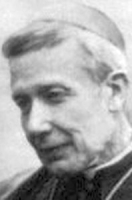
Marcelo Rafael José María de los Dolores Hilario
Son of Juan Spínola y Osorno, marquis of Spínola, and Antonia Maestre y Osorno. Educated at the University of Granada, University of Valencia, and University of Seville. Received degrees in civil and canon law on 29 June 1856. Lawyer in Helva, Spain, working for the poor for free. Lawyer in Sanlúcar de Barrameda, Spain. Sub-deacon on 20 September 1863. Ordained on 2 May 1864 in Seville, Spain. Chaplain of the church de la Merced, Sanlúcar de Barrameda from 1864 to 1869. Canon of the cathedral chapter of Cádiz from 1869 to 1871. Parish priest of San Lorenzo from 17 March 1871 to 28 May 1879. Penitentiary canon of the cathedral chapter of Seville from 1879 to 1880. Titular bishop of Milos and auxiliary bishop of Seville on 16 December 1880. Bishop of Coria, Spain on 10 November 1884. Founded the Order of Slaves of the Divine Heart in 1885. Bishop of Málaga, Spain on 10 June 1886. Senator of the Spanish kingdom from 1891 to 1894. Archbishop of Seville on 2 December 1895. Senator of Spanish the kingdom again, this time from 1898 until his death. Created cardinal-priest on 11 December 1905 but died before his formal installation.
14 January 1835 on the Isle of San Fernando, diocese of Cadiz, Spain as Marcelo Rafael José María de los Dolores Hilario
• 20 January 1906 at Seville, Spain of natural causes
• buried in the metropolian cathedral in Seville
29 March 1987 by Pope John Paul II at Vatican City
https://catholicsaints.info/blessed-marcelo-spinola-y-maestre/
Fhaolain, Filan, Foelan, Foellan, Foilan, Foillan, Fulan
9 January (Ireland)
Son of Feriach and Saint Kentigerna, and related to Saint Comgan. Became a monk in his youth, taking the habit at Saint Fintan Munnu monastery. Accompanied Kentigerna and Comgan to Scotland in the 8th century. Hermit, living most of his life in prayer at Ptiienweem near the Saint Andrew monastery. Abbot of Saint Andrews; his bell and staff survive to today. Hermit at Glendochart, Perthshire, where he built a church.
Legends and large tales naturally grew up around Fillan. For example, a wolf is reported to have killed the ox Fillan employed to work at the church construction site at Glendochart; when the wolf realized whose ox it was, it took the ox's place. For centuries after his death, the mentally ill were reported miraculously cured by being dipped in a fountain in the church, tied up, and left overnight near Fillan's relics; those whose bonds were loosed in the night were cured of their disorders. The victory of Robert the Bruce at Bannockburn was attributed to the presence of Fillan's relics at the battlefield.
Ireland
• c.777 of natural causes
• buried at Strath Fillan, Perthshire, Scotland
• against insanity
• against mental disorders
• against mental illness
• mentally ill people
https://catholicsaints.info/saint-fillan/
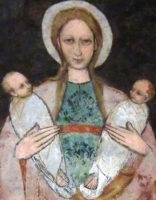
Born to the wealthy, Italian nobility; sister of Saint Faustina of Como. Their mother died when the girls were very small, and they were raised by a guardian. Their father tried to arrange marriages for them, but both girls were drawn to religious life and fled their homes for Como, Italy, where they became Benedictine nuns. They founded the Santa Margarita convent in Como; it lasted over 1,000 years.
In Como the sisters came across a woman dying on a cross, having been crucified by her husband for unknown reasons; Liberata took her down from the cross and miraculously healed her wounds by praying over her.
Rocca d'Olgisio, Italy
• 580 of natural causes
• buried at the cemetery of the convent of Santa Margarita at Como, Italy
• relics in the cathedral of Como
babies
• with Saint Faustina of Como (her sister)
• with Saint Margaret (the patron of the convent Liberata founded)
• Benedictine nun holding a lily
• holding two babies in swaddling clothes; they represent two young saints, traditionally Saint Vital and Saint Valeria, the sisters met as infants; this image led to her tradition of patronage of babies, for safe childbirth and related matters
https://catholicsaints.info/saint-liberata-of-como/

Remigio, Remedius, Remi
Son of Charles Martel. Archbishop of Rouen, France in 755. He served as ambassador to the court of King Desiderio of the Lombards with a commission to negotiate the return of Church lands. Remigius worked for the use of the Roman rite in the Gallic Church in general, and the Gregorian chant in his diocese. He participated in the synod of Attigny in 765.
Legend says that he was assigned by King Pepin the Short to take the relics of Saint Benedict of Nursia from Fleury-sur-Loire in Gaul to Montecassino in Italy. When Remigius opened the tomb, he was struck blind and paralyzed with fear; he returned to normal when the abbot prayed over him, and immediately refused to move the relics.
• 19 January 772 in Rouen, France of natural causes
• relics transferred to Soissons, France in the 9th century to protect them from Norman invaders
• relics transferred back to Rouen in 1090
• relics burned by Protestants in 1562
https://catholicsaints.info/saint-remigius-of-rouen/
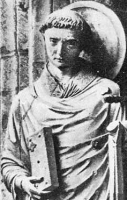
Laumer, Laudomarus, Launomar, Launomaro
Born to a poor family, as a boy he worked as a shepherd near Chartres, France. Priest. Treasurer of the cathedral chapter of Chatres, France. Hermit near Chartres in the forest of Perche, France. His reputation for holiness spread, disciples gathers, and Lomer founded the monastery of Corbion to house them, and served as its first abbot. He lived to be over a hundred.
Neuville-la-Mare, Diocese of Chartres, France
• January 593 of natural causes
• buried in the church of Saint-Martin-du-Val
• re-interred at Corbion Abbey in 595
• some relics transferred to Avranches, France
• some relics transferred to Le Mans, France
• some relics transferred to Moissac, France in 912
• relics at Corbion Abbey burned by Huguenots in 1567
https://catholicsaints.info/saint-lomer-of-corbion/
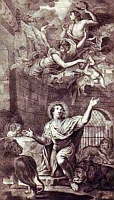
Pontian, Pontianus
14 January (Spoleto, Italy)
Beaten and executed in the persecutions of Emperor Marcus Aurelius. Martyr.
• stabbed with a sword or beheaded (sources vary) in 169 - 175 (sources vary) at Spoleto, Italy
• legend says that a healing spring emerged where his head landed
• buried outside the city walls of Spoleto
• a church and monastery was later built over his tomb
• some relics taken to Utrecht, Netherlands in 968
• all relics re-gathered at the monastery at Spoleto, Italy in 1994
• Pontian is one of the saints on the collonades in Saint Peter's Square in the Vatican
• against earthquakes
• Spoleto, Italy
• Utrecht, Netherlands
https://catholicsaints.info/saint-ponziano-of-spoleto/
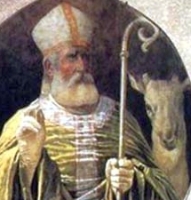
Bassiano, Bassianus
Son of Servius, prefect of Syracuse, Sicily. Student in Rome, Italy. Convert to Christianity. His family opposed the conversion, and when Bassian was ordered back to Syracuse, he fled to Ravenna, Italy. Bishop of Lodi, Italy c.373. Attended the Council of Aquileia in 381. Friend of Saint Felix of Como and of Saint Ambrose of Milan; Bassian was at the deathbed of Saint Ambrose.
c.320 in Syracuse, Sicily
• 413 in Lodi, Italy of natural causes
• following a military defeat of Lodi by Milan in 1158, Bassian's relics were taken to Milan
• relics returned to Lodi in 1163
• Bassano del Grappa, Italy
• Lodi, Italy
• San Bassano, Italy
https://catholicsaints.info/saint-bassian-of-lodi/
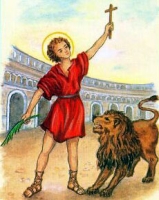
Germanico
Spiritual student of Saint Polycarp of Smyrna. Martyr. The manner of with which he met his death gained the admiration of the locals, and the story of his bravery was recorded by Saint Polycarp.
at Smyrna (in modern Turkey)
• torn apart by animals in 156 during public games in Smyrna (in modern Turkey)
• at first the animals ignored him, but Germanicus provoked them, just to get it over with
• young man with a palm
• young man with a lion
• young man in an amphitheatre with wild animals
https://catholicsaints.info/saint-germanicus-of-smyrna/
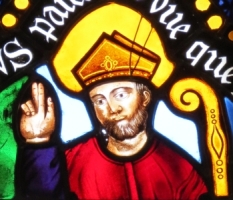
Contestus
Bishop of Bayeux, Normandy, France, from 480 until his death. He was so zealous in his preaching the proper way to live that he angered many powerful local people, and occasionally had to withdraw to live as a hermit for his own safety.
• c.510 in Normandy, France of natural causes
• buried in the church of Saint Exuperius
• relics transferred to Fécamp Abbey on 11 April 1162
• some relics transfered to Saint Vigor Abbey in Bayeux, France in 1682
https://catholicsaints.info/saint-contentius/
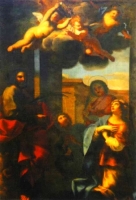
16 January (Jerusalem martyrology)
Born to the nobility. Son of Saint Maris and Saint Martha, brother of Saint Abachum. Convert. Martyred with his whole family in the persecutions of Aurelian as they made a pilgrimage to the tombs of the Apostles.
Persia
• beheaded in 270 at Saint Ninfa, 13 miles from Rome
• relics discovered in Rome in 1590
Caselette, Italy
https://catholicsaints.info/saint-audifax-of-persia/
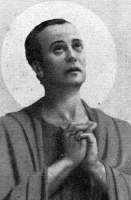
16 January (Jerusalem martyrology)
Born to the nobility. Husband of Saint Martha, father of Saint Audifax and Saint Abachum. Convert who gave his fortune to the poor. Martyred with his whole family in the persecutions of Aurelian.
Persia
• beheaded in 270 at Saint Ninfa 13 miles from Rome, Italy
• relics discovered in Rome in 1590
Caselette, Italy
https://catholicsaints.info/saint-maris-of-persia/

Abacum
16 January (Jerusalem martyrology)
Born to the nobility. Son of Saint Maris and Saint Martha, brother of Saint Audifax. Convert. Martyred with his whole family in the persecutions of Aurelian.
in Persia
• beheaded in 270 at Saint Ninfa, 13 miles from Rome, Italy
• relics discovered in Rome in 1590
Caselette, Italy
https://catholicsaints.info/saint-abachum/

16 January (Jerusalem martyrology)
Born to the nobility. Wife of Saint Maris, mother of Saint Audifax and Saint Abachum. Convert. Martyred with her whole family in the persecutions of Aurelian.
Persia
• drowned in 270 at Saint Ninfa 13 miles from Rome, Italy
• relics discovered in Rome in 1590
Caselette, Italy
https://catholicsaints.info/saint-martha-of-persia/
Boladre, Bralatr, Brangualadrus, Branwalader, Branwalator, Branwalatr, Branwalatre, Branwallanus, Branwallator, Brelade, Brevala, Brevalaer, Brevalaire, Brevalan, Brevalazr, Brevaler, Brevara, Brewalan, Brewalatr, Breward, Brolade, Broladre
Bishop of Jersey, England.
• 6th century of natural causes
• some of his relics were translated by King Athelstan in 935
https://catholicsaints.info/saint-branwallader-of-jersey/
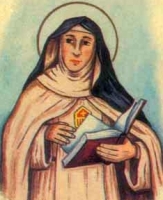
Married. Widow. Mercedarian, donating all her wealth to the ransoming of Christians enslaved by invading Muslims. With Blessed Eulalia de Pinos, Blessed Mary Requesens and Blessed Maria de Cervellon she helped form the first Mercedarian community. Worked with the sick and recently released slaves.
Barcelona, Spain
https://catholicsaints.info/blessed-elisabetta-berti/
Friend of Saint Antoninus of Sorrento. Bishop of Castellammare di Stabia, Italy. Spent part of his life as a hermit on nearby Mount Aureo.
9th century
• Pre-Congregation
• 13 September 1729 (cultus confirmed)
• Castellammare di Stabia, Italy, city of
• Castellammare di Stabia, Italy, diocese of
https://catholicsaints.info/saint-catellus-of-castellammare/
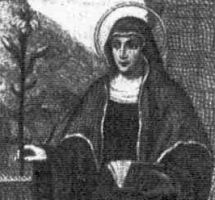
Sister of Saint Liberata of Como. Founder of Santa Margarita convent in Como, Italy.
Como, Italy
• c.580 of natural causes
• relics in the cathedral of Como, Italy
https://catholicsaints.info/saint-faustina-of-como/
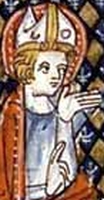
Convert from Judaism. First bishop of Corfu, Greece.
Constantinople
959 of natural causes
Corfu, Greece
https://catholicsaints.info/saint-arsenius-of-corfu/
Founded the Benedictine Cistercian monastery of Epinklieu near Mons, Belgium and lived the rest of her life as a nun there.
Lens, diocese of Arras, France
after 1216 of natural causes
https://catholicsaints.info/blessed-beatrix-of-lens/
Macarius the Alexandrian
Monk. Priest. Bishop. Abbot of a community in the mountains of Scete, Egypt.
c.390
https://catholicsaints.info/saint-macarius-of-alexandria-19-january/
Bishop of Ravenna, Italy during a period when the area of devastated by war with the Lombards.
595
https://catholicsaints.info/saint-john-of-ravenna-19-january/
Appiano of Sagone
Early bishop of Sagona, Corsica (part of modern France). Martyr.
https://catholicsaints.info/saint-appiano-of-sagona/
Eighth-century monk. First abbot of the San Novalesa Abbey of Susa Valley, France.
https://catholicsaints.info/saint-godone-di-novalesa/
Third bishop of Gabales, France.
https://catholicsaints.info/saint-firminus-of-gabales/
A group of Christians martryred together for their faith. The only details to survive are nine of their names - Catus, Germana, Gerontius, Januarius, Julius, Paul, Pia, Saturninus and Successus.
2nd century Numidia in North Africa
https://catholicsaints.info/martyrs-of-numidia-19-january/
39 Christians martyred together in Carthage, date unknown. We have no information about them except 9 of the names – Catus, Germana, Gerontius, Januarius, Julius, Paul, Pia, Saturninus and Successus.
Carthage, North Africa (modern Tunis, Tunisia)
https://catholicsaints.info/martyrs-of-carthage-19-january/
CatholicSaints.Info Portable Edition